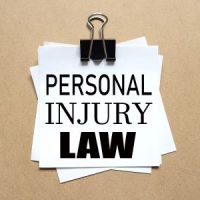How Personal Injury Settlements Work in Florida

While many people assume that it is common for personal injury cases to go to trial, the reality is that the majority of civil cases never make it that far. In fact, only an estimated three percent of personal injury lawsuits go to trial, with the remaining 97 percent getting settled out of court. This is why it’s so important for accident victims to have a good understanding of how the settlement process works and how such settlements are ultimately paid out.
Settling a Case
Whether it happened through mediation, a settlement conference, or negotiations between insurers and attorneys, agreeing to settle a case is an important decision, as it means that the parties won’t have to go through the ordeal of a trial. By agreeing to settle, injured claimants agree to release and indemnify the other party from liability for a particular accident in exchange for a settlement payment, which can take a couple of different forms.
Settlement Payments
After agreeing to settle a claim, insurance companies typically pay out settlements in one of two ways, either as:
- A lump sum, where a claimant receives the entirety of the agreed upon settlement amount at once; or
- A structured settlement, in which a claimant receives his or her settlement in structured payments, or smaller portions over a period of time.
Lump sum payments are more common in Florida, but structured pay-outs still happen. The latter, however, may be less beneficial for a claimant, so it’s a good idea for those who receive notice of a structured settlement, to reach out to an attorney for advice before accepting.
Receiving a Settlement
Once the form of the settlement has been decided upon, the defendant or his or her insurer will issue a settlement check, which will be deposited in the recipient’s client account. This process can take up to a few weeks, but is often resolved more quickly. However, before a person receives his or her settlement funds, the proceeds may need to be distributed to a few other entities first, including:
- Any insurance carriers who imposed liens on the settlement based on compensation they paid for accident-related expenses;
- Taxes on punitive damages and some lost wages;
- Court costs, service of process fees, the cost of hiring expert witnesses, travel expenses, witness subpoena fees, and other legal fees; and
- Legal counsel fees, which often takes the form of a percentage of the claimant’s recovery.
Once these liens, fees, costs, and disbursements have been paid off, the remaining sum of the settlement will be sent in a final check to the claimant.
Contact Anderson & Anderson for Legal Help Today
To learn more about the ins and outs of the personal injury settlement process, please call the experienced Tampa personal injury lawyers at Anderson & Anderson today. Our legal team has been helping accident victims maximize their recovery for nearly 40 years. Let us put that experience to work in your own case. Call us at 813-251-0072 to get started on your case right away.
Sources:
americanbar.org/groups/public_education/resources/law_related_education_network/how_courts_work/cases_settling/
forbes.com/advisor/legal/personal-injury/personal-injury-settlement-amounts/
